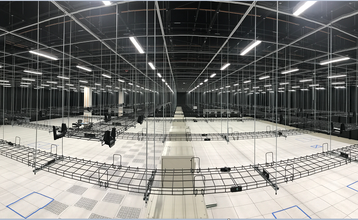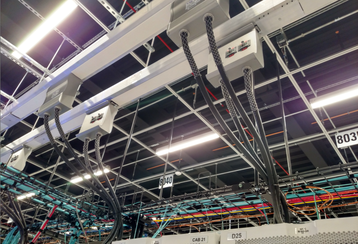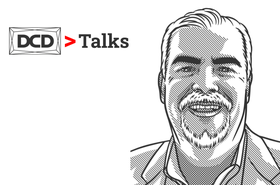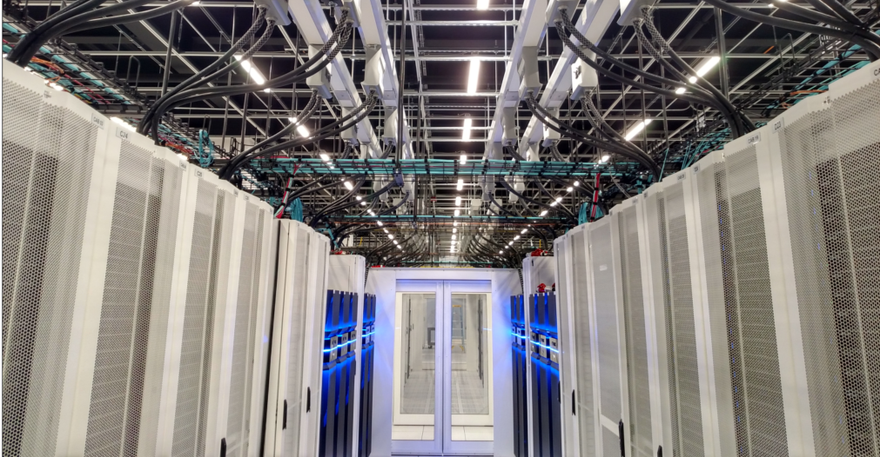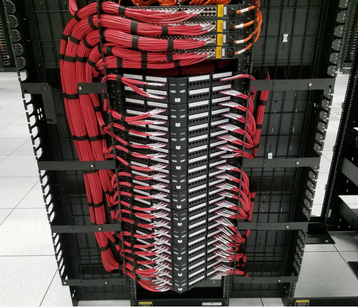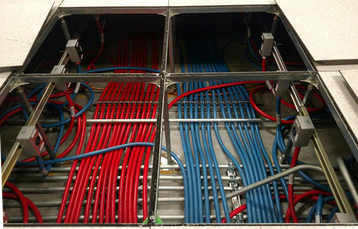A journey of 1,000 miles always begins with the first step. But when designing the ‘white space’ of a fresh, newly built data center, where do you even start?
According to Jim Dooling, president and CEO of Align, and Tom Weber, managing director of Data Center Solutions at Align, the first step should be having a complete understanding of the network Architecture. This impacts all aspects of your project: the flexibility of the facility, the ease with which network issues can be identified and fixed, IT maintenance, efficient operation and, ultimately, the ability to manage costs, year after year.
“It really starts with the network design because this is where you are able to maximize your data center, and design critical infrastructure components efficiently; be able to control operational costs; and, to save money with smart cable and power designs,” says Dooling.
Both Dooling and Weber have worked with hyperscalers and enterprise organizations of all sizes over the past 36 years, Currently the Align team is working on 30 different projects across the world, large and small, totalling more than 150MW of power.
The requirements of different client verticals vary widely, and the expertise they bring to the project team help the client achieve their specific needs.
“For hyperscale, they already have their solution marked down to the cabinet, and they know what their needs are with compute and storage. The whole thing is worked out in detail and is repeatable as they grow into new facilities and new markets,” says Dooling. Indeed, he adds, hyperscalers have the resources to employ the smartest professionals who plan their data centers to the last detail. They design a “cookie cutter model” so as they grow and expand it creates data center investments that are highly competitive on a per cabinet basis.
But for organizations planning and building new data centers on a more ad hoc basis, the challenge can feel daunting.
“We have a lot of clients that come to us and say, ‘Wow! Look at all this white space. What are we going to do with it?’ They’re looking at it and wondering where the cables should run, the best places to locate network switches. They’re thinking about their layout in terms of maintenance, adaptability and future-proofing, as well as the budget,” says Dooling.
Indeed, it’s the enterprise data center operators that often need the most help because it might have been a decade or two since their last data center investment. Not only will much have changed since then in terms of technology, but it is much harder for them to keep track of something as basic as the market prices for the many different services they will need to contract – and service providers know this.
Strategic planning
The reason for the focus on network, rather than power, is quite simple: power won’t change nearly as much as the network during the life of the data center, nor demand as much ongoing attention.
“We always try to oversubscribe at the cabinet, in terms of power, so that you have flexibility. You're not going to run 16 or 32 kW per cabinet on every cabinet, but it's nice to have the option, should you need it. So, from a power perspective, things don’t change that much and, if you’re smart, you can always build-in some extra capacity at the cabinet level from the start so that you can shift and increase capacities in some areas while decreasing in others,” says Weber.
“But from a cable perspective, what we see is that it’s the network that drives the fiber and copper costs of the data center. You model the cable plant around the network architecture and storage fabric, and that dictates the quantities and cable types that you need to distribute out to the compute units and the storage arrays,” says Weber.
In other words, technical choices over network architecture and storage can have big implications in terms of costs, including the cost of cabling.
Newer spine leaf networks, for example, might mean more expensive network switches, but less costly cabling. Moreover, the quotes from providers for something as straightforward as cabling a cabinet, for example, can be all over the place, “We have seen per-cabinet costs from $2,500 to $50,000 per cabinet for cabling,” says Dooling.
While network and storage technology provides a range of options that have implications on cabling; for power, it really is just about providing sufficient power per room, cabinet and device and presenting it in such a way that all equipment components can be powered in a redundant fashion.
Engaging stakeholders
A key component of a successful project is engaging the stakeholders at an early stage. Whether it be large or small, it is an essential ingredient no matter the size, scale and importance of data center.
Very often, says Weber, the meetings that Align and its data center designers have with clients involve the organization’s technology specialists – typically covering compute, storage and the network – but many key decisions aren’t necessarily in their capable hands.
Those key stakeholders won’t just include the technology specialists who are making the big design decisions, but also the technical staff who will operate and maintain the data center on a day-to-day basis. Other key stakeholders include the department leadership who will depend on the new facility and, of course, the business and finance heads who will need to approve the expenditure.
“While a finance director will not likely be directly involved with the day-to-day meetings, they can give the technology specialists essential budgetary information that will enable the project team to put together a range of design options with operational costs for senior management approval,” says Dooling.
“It’s our job to make sure that we are giving them a well-thought-out plan that provides options in terms of design. We ensure that all stakeholders understand the decision process and why they are making their decisions,” says Dooling. “They need to feel confident so they can justify their decisions to management, down the line, when they have to get the budget approved alongside implementation,” he adds.
However, what makes fleshing out the design of the data center white space today more complicated isn’t necessarily the technology, but the convergence of the various technologies.
“Go back even just ten or 12 years ago and your data center could be stripped down into storage area, network area, compute area and so on. But that’s not necessarily the case anymore. It’s a very converged environment. In the old days, we had a core network that connected everything up. Now, with the spine leaf network, we can put ‘leaves’ wherever we like, as well as storage directors, switches within the server farm and share resources,” says Weber.
For Weber, though, it’s a great opportunity to get all the technical decision-makers into the same room and to thrash out solutions that work for everyone, including the technicians who have to put on their thick fleeces and venture into the cold aisle.
“Sometimes, the best ideas come from the professionals who work in the data center every day. He or she sees the problems and has feet on the ground. I love talking to these individuals early on in the process, taking some of their suggestions and using them to see whether we can come up with a better design that also works well for them,” says Weber. “Ultimately, when the job is done, you want the team to move into the new data center and feel comfortable supporting it.”
Expert advice
Indeed, today, designing the data center white space is more challenging than ever, which is why having the expertise of a specialist like Align is essential, especially when global supply chain issues also need to be considered.
Focused purely on what makes a data center a data center, Align can start work on the technology infrastructure design before even the plastering on the walls has dried.
“Our design and build services are focused solely on the white space. We are not tilting up pre-cast concrete walls, we’re not installing fire suppression systems; we work on the cabinet layouts, the overhead convenience layouts, power distribution, cable distribution and so on,” says Weber.
“Our design and build services are focused solely on the white space. We are not tilting up pre-cast concrete walls, we’re not installing fire suppression systems; we work on the cabinet layouts, the overhead convenience layouts, power distribution, cable distribution and so on,” says Weber.
Moreover, to hit tight deadlines, custom rack layouts can be built-out in Align warehouses with the desired patch panels, cabling and other elements all pre-installed so that a build can proceed with all the speed and efficiency of a hyperscaler, regardless of the client.
And, despite the uncomfortably high rates of consumer price increases many countries are currently grappling with, Weber sees signs that inflation is abating in the global market for data center equipment, with the price increases that had battered the industry for the past two years levelling off in recent months.
Nevertheless, he adds, lead times remain stubbornly high, and data center builders may therefore have to be flexible in terms of the precise equipment they install in readiness for ‘day zero’. In some cases, it will either be that, or an uncomfortable wait.
After all, while data centers have become increasingly bigger and more complex, and the global environment more uncertain, one thing that is unlikely to change in the foreseeable future is demand for data center space.
Planning a new data center, but want to make sure that it’s the best you can build today, yet future-proofed for tomorrow? Align specializes in all phases of the data center lifecycle, including strategy, assessment, design, build-out, and day-2 support. Check out Align Data Center Design and Build to learn more about Align and unleash the power of your data center.
More...
-

Sponsored Overcoming supply chain challenges
Supply chains were already stretched in 2019. Then Covid hit, and the Russo-Ukraine War has exacerbated them still further. How can data center builders and operators manage the growing risks?
-

Data center NIMBYism: How to engage with local communities properly during data center projects
Opposition to data center development often stems from a lack of understanding and engagement with local communities and stakeholders
-
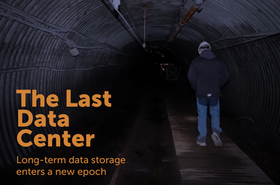
DCD Magazine out now: The last data center
Exploring the next epoch of data storage

